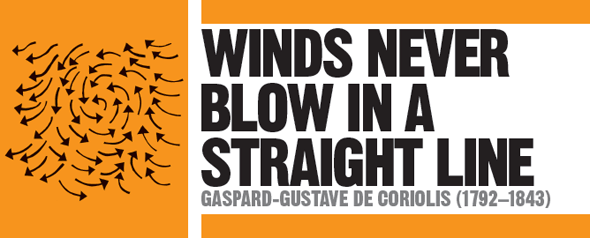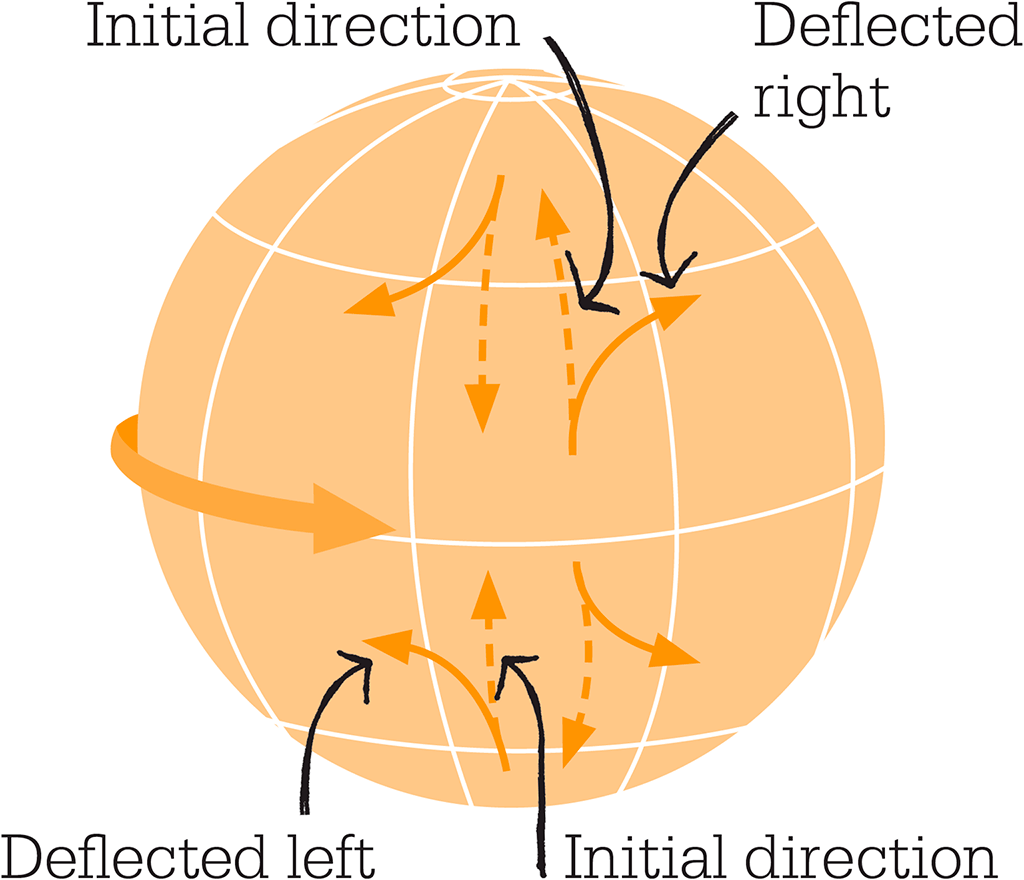
IN CONTEXT
Meteorology
1684 Isaac Newton introduces the idea of centripetal force, stating that any motion in a curved path must be the result of a force acting on it.
1735 George Hadley suggests that trade winds blow towards the equator because Earth’s rotation deflects air currents.
1851 Léon Foucault shows how the swing of a pendulum is deflected by Earth’s rotation.
1856 US meteorologist William Ferrel shows that winds blow parallel to isobars – lines that connect points of equal atmospheric pressure.
1857 Dutch meteorologist Christophorus Buys Ballot formulates a rule stating that if the wind is blowing on your back, an area of low pressure is to your left.
Air and ocean currents do not flow in straight lines. As the currents move, they are deflected to the right in the northern hemisphere, and to the left in the southern. In the 1830s, French scientist Gaspard-Gustave de Coriolis discovered the principle behind this effect, now known as the Coriolis effect.
Deflected by rotation
Coriolis got his ideas from studying turning waterwheels, but meteorologists later realized that the ideas apply to the way winds and ocean currents move.
Coriolis showed how, when an object is moving across a rotating surface, its momentum seems to carry it on a curved path. Imagine throwing a ball out from the centre of a spinning roundabout. The ball appears to curve around – even though to anyone watching from outside the roundabout it is actually moving in a straight line.
Winds on the rotating Earth are deflected in the same way. Without the Coriolis effect, winds would simply blow straight from high pressure areas to low pressure areas. The wind direction is in fact a balance between the pull of low pressure and the Coriolis deflection. This is mostly why winds circle anticlockwise into low pressure zones in the northern hemisphere, and clockwise in the southern hemisphere. Similarly, ocean surface currents circulate in giant loops or gyres, clockwise in the northern hemisphere and anticlockwise in the south.

Earth’s rotation causes winds to be deflected to the right in the northern hemisphere and left in the southern.
See also: George Hadley • Robert FitzRoy